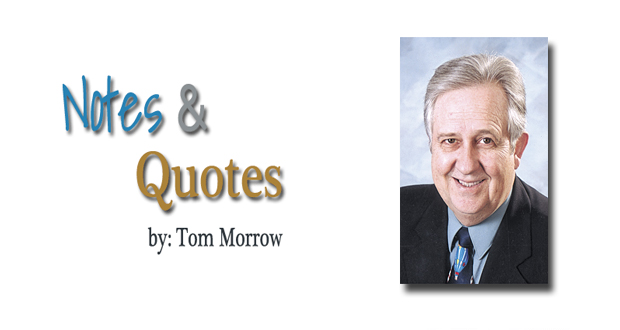The Automobile Man and his Dream
By Tom Morrow
Long before Elon Musk and the all-electric Tesla there was a revolutionary car created by a post-World War II automotive visionary, Preston Tucker. He conceived and built the forerunner of safety features that are common place in today’s transportation. He was a half century ahead of time.
Tucker, born Sept. 21, 1903, is most remembered for his 1948 Tucker sedan, initially nicknamed the “Tucker Torpedo.” The car was futuristic introducing many features that have since become widely adapted for modern cars.

Tucker grew up near Detroit and was obsessed with automobiles from an early age. During World War II Tucker became associated with Andrew Jackson Higgins, builder of Liberty ships, PT boats and landing craft. Tucker moved to New Orleans to serve as a vice-president of Higgins Industries, specifically in charge of the Higgins-Tucker Aviation division. This entity produced gun turrets, armament, and engines for Higgins’ torpedo boats.
After the war, the public was ready for totally new car designs, but the Big Three Detroit automakers (Ford, General Motors and Chrysler) had not developed any new models since 1941, and were in no hurry to introduce them. That attitude provided great opportunities for an independent automaker to rapidly produce a new design of cars.
Tucker’s first design appeared in Science Illustrated magazine in December 1946, showing a futuristic version of the car with a hydraulic drive system. The motoring public became excited about the Tucker.
But, in 1949, production of the Tucker ’48 was shut down amidst scandal and controversial accusations of stock fraud. The 1988 movie “Tucker: The Man and His Dream,” starring Jeff Bridges, is based on Tucker’s ordeal surrounding the car’s production.
Tucker’s specifications for his revolutionary car called for a rear engine, a low-RPM 589 cubic inch engine with hydraulic valves instead[of a camshaft, fuel injection, direct-drive torque converters on each rear wheel (instead of a transmission), disc brakes, the location of all instruments within the diameter and reach of the steering wheel, a padded dashboard, and self-sealing tubeless tires. These were innovations never conceived on cars.

Also, the design had independent springless suspension, a chassis that protected occupants in a side impact, a roll bar within the roof, a laminated windshield designed to pop out during an accident, and a center “cyclops” headlight which would turn when steering at angles greater than 10 degrees in order to improve visibility around corners during night driving. Having run out of time to develop the 589-cubic-inch engine, Tucker settled on a modified aircraft engine. All of these developments were futuristic at best.
The U.S. Securities and Exchange Commission (SEC) was embittered after small automaker Henry J. Kaiser was given millions of dollars in grants towards development of his new Kaiser and Frazer cars, but reportedly squandered the money. Still while Tucker took no money from the federal government, SEC kept him under close scrutiny.
An SEC trial began on Oct. 4, 1949, and the factory was closed on the very same day. At that point, only 38 Tucker’s model for 1948 had been built. However, a corps of 300 loyal employees returned to the factory (some without pay) and finished assembly of another 13 cars for a total of 51 cars.
The SEC contended Tucker never intended to produce a car. Throughout the trial, the SEC report on Tucker was classified as “secret” and even though his attorneys were never allowed to view or read it, the document was leaked to the press.
The prosecution and defense debated until the judge demanded prosecutors “get down to the meat of the case and start proving the SEC conspiracy charge.”
Tucker’s defense attorneys surprised everyone by refusing to call any witnesses. Defense attorney Daniel Glasser told the court, “It is impossible to present a defense when there has been no offense.” Kirby invited the jury to take a ride in one of the eight Tucker ’48s parked in front of the courthouse. The verdict quickly came in “not guilty” on all counts.
Despite the outcome of the trial, speculation whether the entire Tucker enterprise was a sham. The Tucker Automobile Club of America has amassed more than 400,000 drawings/blueprints, corporate documents, and letters suggesting Tucker was, in fact, planning to mass-produce the Tucker ’48. He hired more than 1,900 employees.
Preston Tucker’s reputation rebounded after his acquittal. His optimism was remarkable; after the trial was over, he was quoted as saying, “Even Henry Ford failed the first time out.”
But, it was not to be. Tucker’s assets were auctioned off, but two remaining Tucker ’48 cars were given to Tucker, and his mother. He died of lung cancer on Dec. 26, 1956, at the age of 53, and is buried in Flat Rock, Michigan.
Today, entrepreneur Elon Musk, builder of the electric-powered Tesla, no doubt, understands much of the turmoil Preston Tucker endured. He was defeated and “Big Three” executives smiled.




